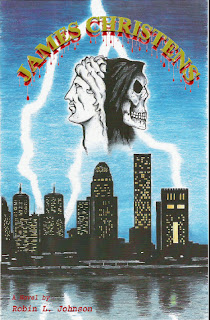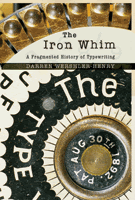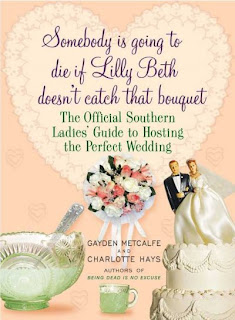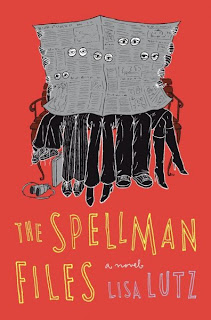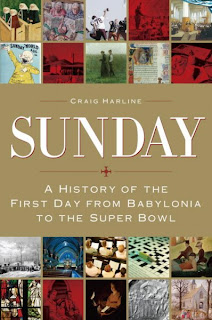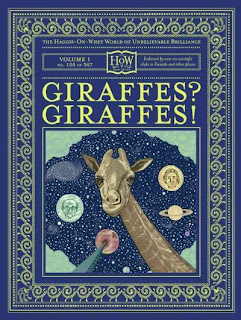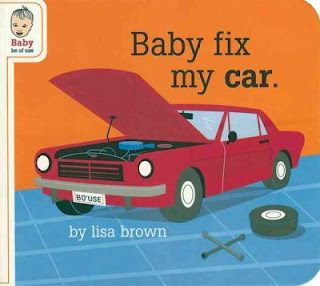You'll have noticed the "browse inside" features we've added recently. It's certainly not the same as holding the book and flipping through it, but it's a nice touch that
just became available to the wider universe of Web sites. That the launch of HarperCollins's and Random House's feature coincided with the kickoff for this blog is just that - coincidence.
Sunday's are notebook days, not because I couldn't preview a book for you, but because I want the blog to offer more to you than a "buy this book" posting. Reserving Sunday's for education instead of sales (but look below for
Sunday: The History of the First Day From Babylonia to the Super Bowl) is the best way to ensure we stick to our objectives.
---------------------------------
The unique identifier for any book - the one way you can be sure you're getting the precise edition you want (paperback, hardcover, reinforced binding, audio, 3rd revision, etc.) - is the ISBN. It's pretty straightforward.
International Standard Book Number. Until January, the ISBN was a 10-digit number. On January 1, 2007 the book world began to transition to a 13-digit numbering system. In these early days, it doesn't really matter if you know the 10 or the 13 - either is a unique identifier of the same book and our software verifies that there will be no confusion. When you call and say "I have the ISBN if that will help..." it ensures that we are pulling the "right" book for you. We don't always need it, but it is useful. That's why I always try to include it on first impression on this blog. Unfortunately, I can't persuade the newspaper to do that, but then, even the publisher Web sites bury that important number.
Did you ever wonder why most ISBN's are more complex than they need to be? You know. Pick up a book and look on the back cover where the bar code is, or look on the copyright page inside. The ISBN is "cluttered" with dashes separating the digits. Old-time booksellers became savants about ISBN's in the pre-computer age. Those dashes were a critical element that told them who the publisher (or imprint) was. Today, you'll learn how to read an ISBN yourself.
ISBN 13: 978-0-312-34729-1 and ISBN 0-312-34729-4 are the same book. You
will want to read this when it comes out in July. Trust me!
So how to read this? The 978 simply identifies it as a book delivered in any type of media. Later, 979 will be added. This precursor number was added to normalize the books industry with others. The ubiquitous UPC (uniform product code) has been at 13 digits for some time, and at the retail/consumer level, books have been out of sync. That's why "drugstore" paperbacks wouldn't scan in a bookstore. The major chains required publishers to cater to their systems for the mass market paperbacks. Bookstores would have to scan the inside front cover to accommodate the Krogers, Targets, and Waaaa...I can't type the word.
As a quick aside, there's another reason the inside back cover includes an ISBN bar code. Mass market paperbacks (the $5.99 to $9.99 ones) aren't designed to last. They are designed to be read once and discarded. They are so little regarded that many publishers have no interest in recovering them if they don't sell. Some retailers (not bookstores) simply tear the cover off the paperback and mail that back to the publisher, then throw (recycle) the book away. You'll often read inside a MM paperback a legal notice that says if you've received this book without a cover, the book has been stolen. It was sent out to be sold or "stripped." The ISBN is on the inside cover so that the whole book doesn't have to be sent back.
Back to ISBN's. 978 says it's a book. The next digit, 0 (zero), is the national identifier. In the U.S. and English-speaking world, 0 or 1 indicate that. There are more than 160 official agencies authorized to issue ISBN's, but only one in the U.S. The others are reserved for individual countries or country groups. In this country,
only Bowker can issue you an ISBN publisher identifier. If anyone tries to "sell" you an ISBN, you are being defrauded and participating in a fraud, too.
ISBN 13: 978-0-312-34729-1. "978" is for books. "0" is for U.S. The "312" identifies the publisher. A large publisher with multiple imprints or one who has acquired other publishers might have dozens of these. In this case, the "312" represents one of St. Martin's Press's issued identifiers for its Thomas Dunne Books imprint. "34729" is the number of the book, usually assigned by the publisher consecutively. You can see that St. Martin's has been assigned 99,999 unique numbers.
A micropublisher like Flood Crest Press, New Albany's publisher, has been assigned only 99 numbers. Its publisher identifier is "934130," one of 999,999 possible numbers. St. Martin's is, relatively speaking, occupying an elite group of no more than 999 publishers its size and scale.
So, finally, what is that last digit for. If you really want to know, I'll tell you. Post a comment to show you really want to know, and I'll follow up with a full explanation. But in brief, it is a check sum based on a fairly simple, but complicated algorithm that verifies that an ISBN is valid. That prevents mistakes and overlaps and keeps people from simply making up a number 13 digits long. When you see an "X" in the last digit, representing 10, a possible sum of the algorithm, or modulus.
Wasn't that fun. We'll revisit "How to Read a Book Cover" in some future Sunday notebook.
---------------------------------
Here's a recap of this week's Book Sense Best Seller lists.
 Trade Paperback Fiction
Trade Paperback Fiction
1. The Memory Keeper's Daughter
Kim Edwards, Penguin, $14, 9780143037149
A tragic snap-decision about a handicapped baby, played out among the affected.
2. The Inheritance of Loss
Kiran Desai, Grove, $14, 9780802142818
A rich Book Sense Notable and winner of the Man Booker Prize. Set in India on the eve of the Nepalese movement for an independent state.
3. Snow Flower and the Secret Fan
Lisa See, Random House, $13.95, 9780812968064
A #1 Book Sense Pick in hardcover, set in 19th-century rural China. Trade Paperback Nonfiction
1. Eat, Pray, Love
Elizabeth Gilbert, Penguin, $15, 9780143038412
The author's year long search for spiritual meaning.
2. The Year of Magical Thinking
Joan Didion, Vintage, $13.95, 9781400078431
Paperback edition of the National Book Award winner, Book Sense Notable, and Broadway production.
3. Three Cups of Tea
Greg Mortenson, David Oliver Relin, Penguin, $15, 9780143038252
An American's effort to open 50 schools across rural Pakistan and Afghanistan. A Book Sense Notable title.
Hardcover Fiction
1. Nineteen Minutes
Jodi Picoult, Atria, $26.95, 9780743496728
A high school shooting rampage is the latest contemporary issue for Picoult.
2. Whitethorn Woods
Maeve Binchy, Knopf, $25.95, 9780307265784
Step into the deep, Irish woods with reader favorite Binchy.
3. What Is the What
Dave Eggers, McSweeney's, $26, 9781932416640
Fictionalized memoir of a survivor of the tragedy in the Sudan.
Hardcover Nonfiction
1. The Secret
Rhonda Byrne (Ed.), Beyond Words, $23.95, 9781582701707
A collection of wisdom and philosophies to improve our daily lives.
2. A Long Way Gone
Ishmael Beah, Sarah Crichton/FSG, $22, 9780374105235
A hypnotic firsthand account of war from a former 12-year-old soldier in Sierra Leone's civil war.
3. I Feel Bad About My Neck
Nora Ephron, Knopf, $19.95, 9780307264558
Funny, funny comic relief, on being a woman of "a certain age," from the honest and smart Ephron. A Book Sense Pick.
For the entire list, go here.
---------------------------------
Read this item with a "grain of salt," but the publisher of the seventh Harry Potter book, Scholastic, is going to great effort to let the world know that
Year 7 - HP and the Deathly Hallows will be environmentally responsible. In response to pleas by the
Rainforest Alliance, the publisher has pledged that all copies of the standard hardcover edition will be printed on 30 percent post-consumer waste fiber paper - all 784 pages. In addition, more than half the paper will have been approved by the
Forest Stewardship Council. And the deluxe edition, which will be in limited supply at $65, will be printed on paper that is derived from 100 percent post-consumer waste fiber.
Destinations Booksellers will have five copies, or 0.005% of all the copies in the world. What does that mean? If you want it, you'd better let us know! The book releases on July 21 at midnight.

